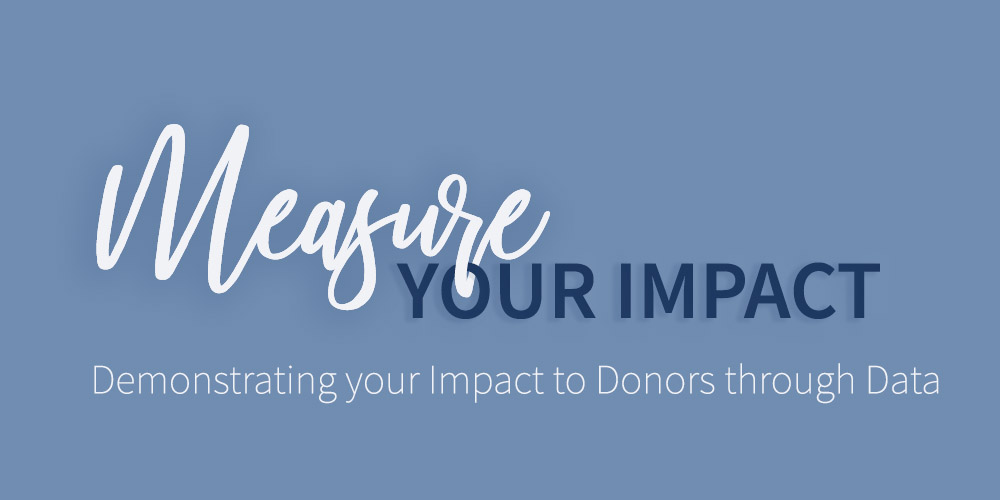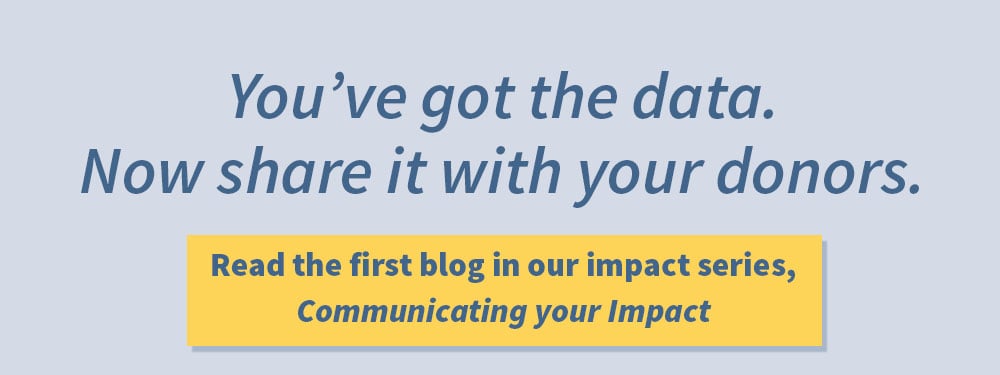By now, most nonprofits are aware that measuring their organization’s impact is a critical step in securing funds from donors. Still, nonprofits struggle to determine what they should be measuring – and how? In order to effectively communicate your organization’s impact to potential donors, you’ll need to properly measure and define your impact in a quantifiable way. One effective way to achieve this is through tracking your indicators and outcomes.
Indicators
Indicators are a data-driven way to demonstrate progress toward your organization’s goals. Some examples might be the number of programs your organization offers, the number of participants involved, or the percent of goals reached.
To best measure your progress, you’ll need to create impact indicators that are:
- Specific
- Measurable
- Understandable
- Relevant
- Time Bound
- Valid
- Actionable
Historically, this data is what we’ve measured for grants, and is generally easy to track and gather. However, it’s also important that your organization is tracking outcomes.
Outcomes
Outcomes are the near-term changes and accomplishments that contribute to long-term change. These numbers are less about what you’re doing and more about how that activity is impacting the world around you. So how do you start tracking his?
Steps in drafting your outcomes:
- Describe the outcomes you want to achieve (why do you perform the process or service in the first place?).
- Turn the identified outcomes into a quantitative measure (i.e. % of clients demonstrating new behavior, % of clients coming back into treatment, etc.).
- Confirm that your desired outcomes are actually linked to your strategies and activities. In other words, ensure that it is reasonable to expect your desired outcomes to be achieved based on your activities.
- Implement these measures and track them over time.
- Demonstrate and increase your success because you have the data to confidently and appropriately communicate your impact and value.
Unlike indicators, outcomes are not always quantitative. In fact, many times they are qualitative and track impacts such as “increased well-being,” “opportunities for advancement,” or “being aware of, and understanding, a societal problem or circumstance, illness, or political issue.”
Outcome metrics can be gathered through activities like:
- Survey of participants or community residents
- Organizational Records
- Audience surveys
- Production synopsis
- Internal program records
- Survey of mentored youth
In short, Indicators vs. Outcomes:
Indicators are quantifiable measures that demonstrate progress toward outcomes
- Number of programs offered
- Number of participants
- Percent of goals reached
Outcomes are the activities that contribute to long-term change. (impact)
Determining what your indicators and outcomes should be is the first and most important step in creating a system to measure your organizational impact. Together, these two tracking methods can help you gauge which programs are the most successful and help your organization maximize its mission.



Comments
Questions or comments? Join the conversation!